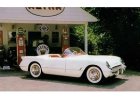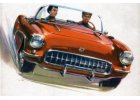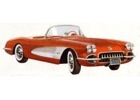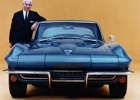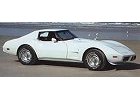|
|
||
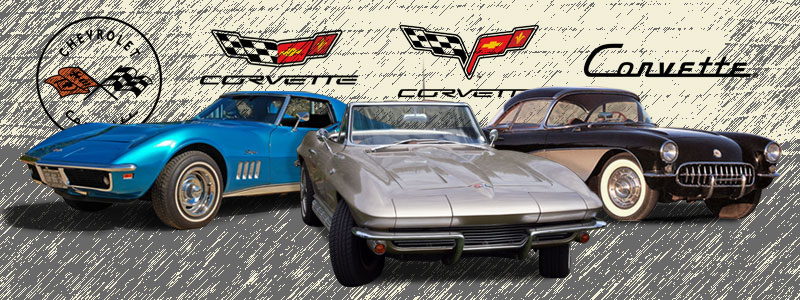
|
|
|||||||||||||||||||||||||||
|
There's no denying one simple fact: Since day one, the Chevrolet Corvette has been the best-performing American automobile. Just about every major technological development in American sports cars has been seen first on the Vette, from its fiberglass body to its independent suspension and four-wheel-disc brakes. Amazingly, some of the items the Corvette has had for almost 30 years as standard equipment still haven't found their way to the rest of the Detroit lineup. Most recently, this tradition has continued to include such developments as computer-controlled adjustable suspensions, plastic springs and 6-speed manual transmissions.
Correspondingly, however, since day one, the debate has raged over how to classify the Chevrolet Corvette. This problem was compounded further during what is now known as the musclecar era. Despite the fact that the original 1953 Blue Flame 6-cylinder Corvette was a genuine roadster in the traditional sense - no side windows, no door handles, a folding soft top - it was never accepted by the sport-jacket sports car crowd. For one thing, it had an automatic transmission. It was just too big, too thirsty for petrol, too "American." It was, by the end of the decade, too powerful as well. Its 283-cube small-block put out as much horsepower as three or four traditional "sports car" engines. By that time, also, the Vette had learned how to handle the corners as well as most. When the 1960s came around, the radical new Sting Ray was immortalized in song by everyone from The Beach Boys to Jan and Dean. And with the new body style came another challenge to its reputation - the supercar. Starting with the 1964 GTO, big engines were getting dropped into (relatively) lightweight body styles. Even though it went against his better judgment (because it would forsake handling and balance), Zora Arkus-Duntov, the chief Corvette engineer, decided to install the new Mark IV big-block engine under the hood of the Corvette for 1965. The now-revered 396 Rat motor gave an already furious machine awe-inspiring power. Yet nobody really called it a muscle-car. Despite a 7-liter engine, Jaguar and Porsche aficionados looked down their noses at it, but mostly it was out of jealousy. Not only would the slowest Vette outrun these slugs, but for the most part it could out handle and out brake them as well. The term musclecar may not have been used during what has become known as the musclecar era, but things have a habit of changing over time. It is true that, in their day, the Mustangs, Camaros, 'Cudas, etc., weren't considered supercars either, regardless of the displacement of their powerplants. These were the ponycars. For those who were growing up when these cars were new and got their licenses in the late 1970s, though, all of these vehicles were lumped into the same category. With the hottest new iron available back then being 17-second Camaros and 18-second Mustangs, what else could they be called but musclecars? So the Corvette today is judged as most definitely a musclecar. It didn't fit the more traditional definition of a true hot rod - that which has the biggest motor possible crammed into the lightest body style. The 1966 427 Sting Ray convertible would run a 12.8-second quarter mile at 112 mph. This compared favorably to the GTO, the 4-4-2, the Buick Gran Sport, the 396 Chevelle and the Ford Fairlane and Mercury Comet Cyclone. The closest any of these cars came to the Corvette was the 390 Cyclone's 13.98 at 103.8 mph. Next in line was the legendary three-deuce 389, which went 14.05 at 105. Fast for certain, but not within a second of the Vette. |
|||||||||||||||||||||||||||
|
|||||||||||||||||||||||||||
|
|||||||||||||||||||||||||||
